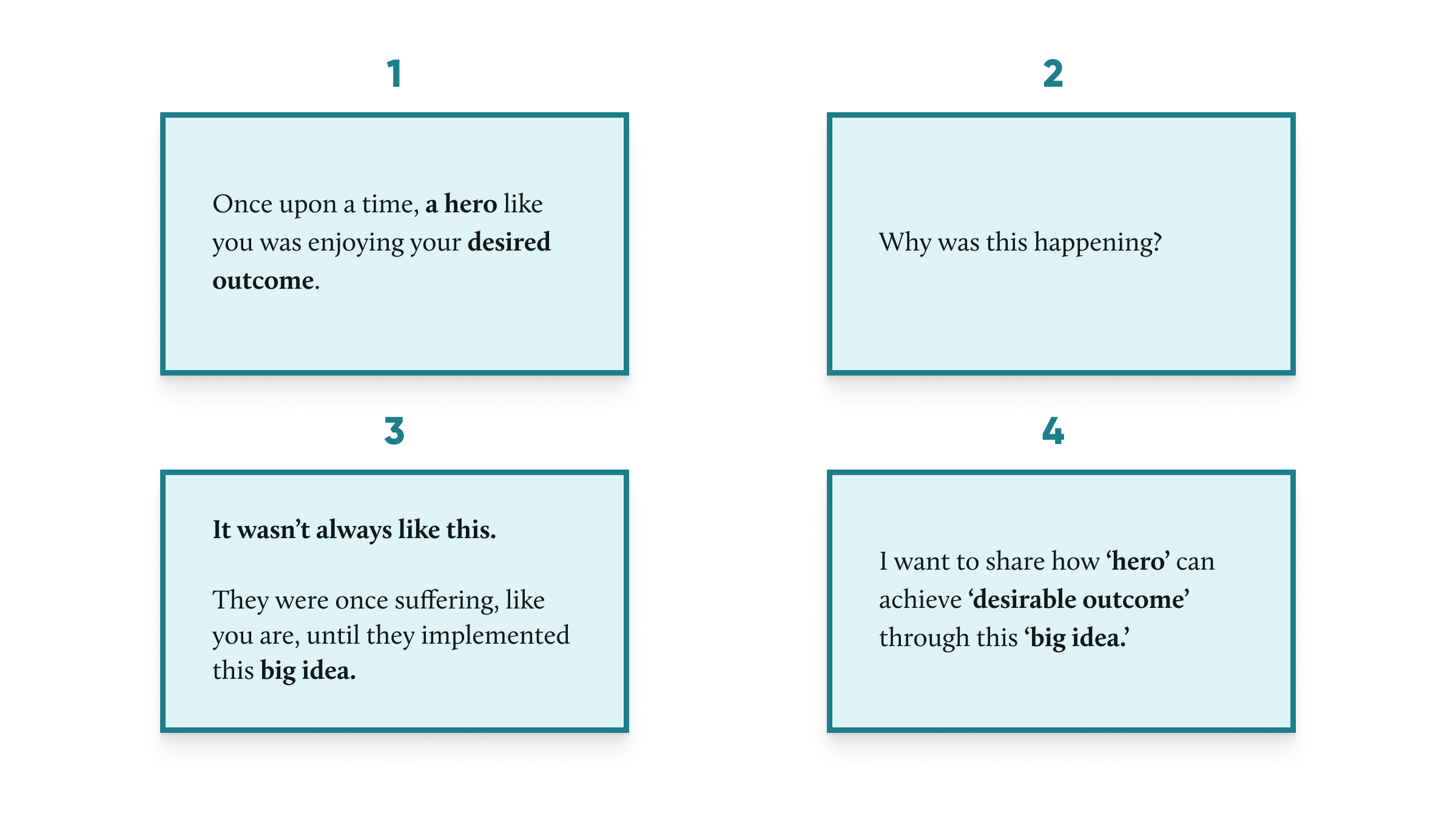Over reliant on word of mouth?
Every 3 weeks, I publish deep dives into B2B thought leaders, breaking down their journey from unknown consultant to top tier personality.
(A note: This is part one on my series of creating a StoryDeck.)
Hans received a clear brief.
Give us a score that runs for 20 seconds. From here, the score ends, the film starts with dialogue introducing the characters.
So he got to work, lost himself in the creative process, and returned with his score.
Now, standing in front of the producers, he plays it to them, and as it’s playing, he realised:
“Ah God, I forgot! This was supposed to be 20 seconds.” This score is minutes, not seconds.
The music ends, and the producers shuffle off to talk in a huddle.
Hans knows what’s going on. They’re figuring out who they’ll get to replace him.
He goes over to break up the huddle.
“Look guys, I’m really sorry, I can do this thing 20-seconds.”
“No, no, no. That’s not what we’re talking about at all. We’re gonna go away and reanimate that whole opening, take all of that dialogue out.”
And so this demo replaced the dialogue and became The Circle of Life opening sequence in The Lion King.
That’s where any simple story starts, and we’re keeping this thing simple.
Hans Zimmer’s score, the African sounds, and the visuals profoundly tell us where this story begins and ends.
There’s a wonderful symmetry to it.

And then, minutes after the opening, Mufasa tells us:
“Look Simba. Everything the light touches is our Kingdom. A King’s time as ruler rises and falls like the Sun. One day Simba, the Sun will set on my time here and will rise with you as the new king.”
Beautiful!
Even if you don’t consciously catch it, the audience subconsciously understands the journey we (and our hero) want to embark on.
When Mufasa dies, Simba will rise as the king.
Our desired outcome.
In storytelling, that’s more important than ever.
Nowadays, we have an abundance of choice when it comes to entertainment.
As a result, our tolerance for boredom is zero.
That’s what happens when a user lands on your website and disappears within ten seconds without scrolling to learn more.

Or when your prospect starts daydreaming three slides into your presentation.
They're leaving if it's not clear what's in this thing for them.
You make it clear by telling them (immediately) where this story ends.

The visual above shows my story structure for building a 20-slide deck. It then informs how I create persuasive copy across other platforms (website, ads, social, etc.).
It's a 5 act structure, beginning with Act 1 - The Destination.
As with The Lion King, at the start of the story, your goal is to tell the prospect how this story ends.
In her TED talk, Zoë Karl-Waithaka is selling the following idea:
How marketing could improve the lives of African farmers.
Here’s how she introduces her story:
And here’s the structure of that opening:

She gives an example of someone who achieved this desirable outcome your hero is dreaming of.
Then she encourages us to ask ourselves, ‘What’s going on here?’
And she focuses our attention on her big idea that led to this desired outcome (without giving too much away).
Finally, she wraps up the opening by explicitly telling us what we’re here for. She gives us her story statement.
It's intriguing. If you're an NGO tasked with helping improve African farmers' lives, you want to hear the rest of the story.
Give us a brief example of:
I’ll leave you to get started on your story.
We’ll figure out the next Act in the deck. - The Nightmare.
Over reliant on referrals and word of mouth?
Every 3 weeks, I publish deep dives into B2B thought leaders, breaking down their journey from unknown consultant to top tier personality.